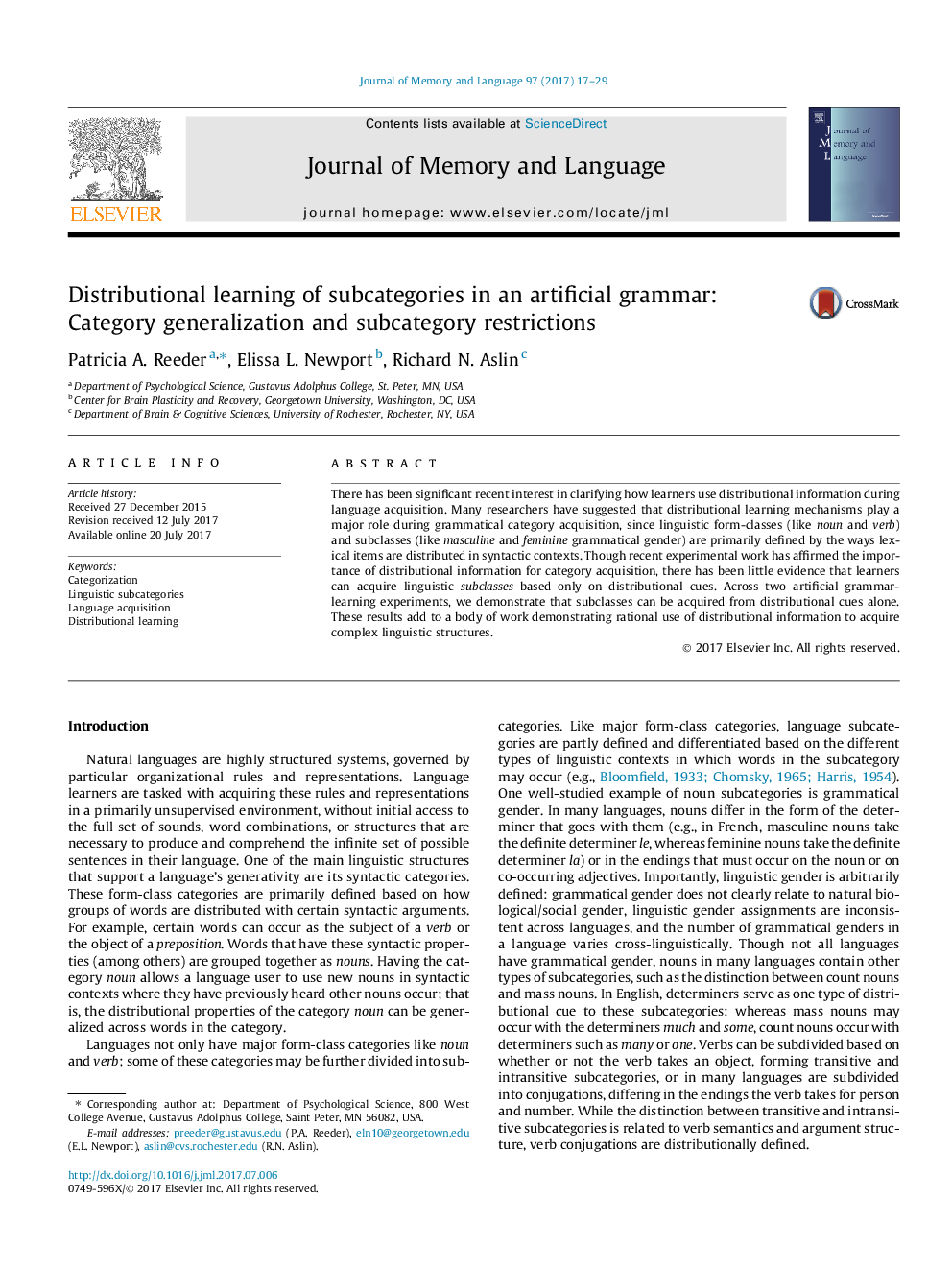| Article ID | Journal | Published Year | Pages | File Type |
|---|---|---|---|---|
| 5042573 | Journal of Memory and Language | 2017 | 13 Pages |
â¢Distributional learning mechanisms are important for grammar acquisition.â¢Learners can use distributional cues alone to acquire artificial syntactic categories.â¢We tested if learners would use distributional cues to acquire syntactic subclasses.â¢Results show that subcategories can be learned from distributional information alone.
There has been significant recent interest in clarifying how learners use distributional information during language acquisition. Many researchers have suggested that distributional learning mechanisms play a major role during grammatical category acquisition, since linguistic form-classes (like noun and verb) and subclasses (like masculine and feminine grammatical gender) are primarily defined by the ways lexical items are distributed in syntactic contexts. Though recent experimental work has affirmed the importance of distributional information for category acquisition, there has been little evidence that learners can acquire linguistic subclasses based only on distributional cues. Across two artificial grammar-learning experiments, we demonstrate that subclasses can be acquired from distributional cues alone. These results add to a body of work demonstrating rational use of distributional information to acquire complex linguistic structures.
